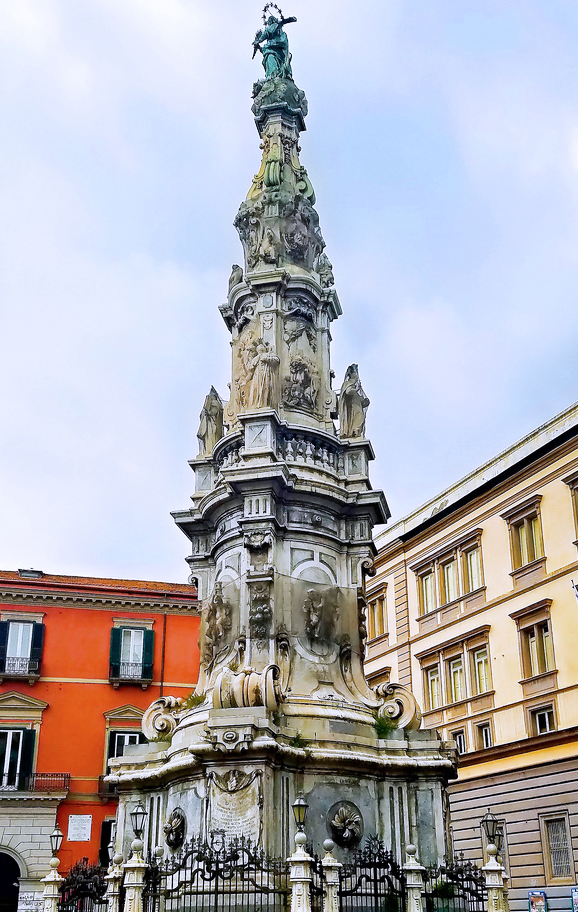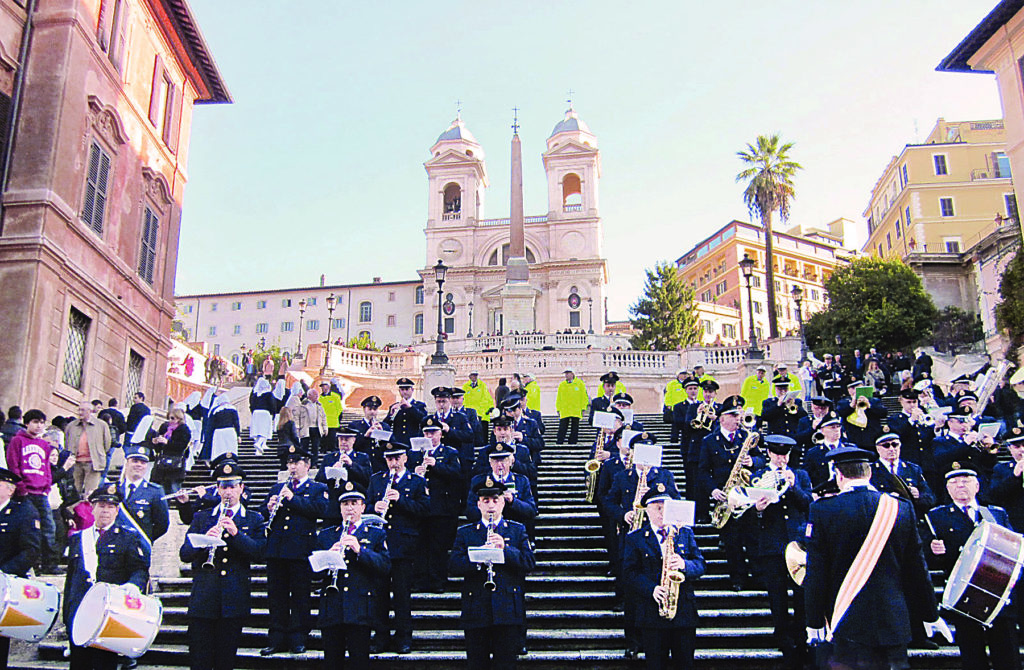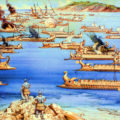Though Advent and the Feast of Saint Nicholas define much of what we think of during the Christmas season, in Italy it is the Feast Day of the Immaculate Conception on December 8 when the holiday season gets underway. On La Festa dell’Immacolata, decorations go up in the cities, villages and inside homes. Decorations and huge Christmas trees can be found in the main piazzas throughout the country.
La Festa dell’Immacolata commemorates the conception of Mary in the womb of her mother, Saint Anne. It is often mistakenly thought of as Mary’s conception of Jesus, but actually marks the conception of Mary herself, which was immaculate because God intervened, absolving Mary of original sin. December 8th was first officially declared a holy day by the Vatican in 1854, when Pope Pius IX settled disputes and confirmed that the conception had been immaculate. But the first celebrations of the event happened as early as the seventh century.
It is traditional for the Pope to be in Rome on December 8th and to visit, paying homage to the statue of Mary located near the Spanish Steps. Commissioned by Pius IX and designed by Luigi Poletti, the statue of the Blessed Virgin was created and dedicated in honor of her Immaculate Conception and sits atop an ancient Roman column of Cipollino marble, standing 40 feet tall.
At 7:30 am on the morning of December 8, firemen climb a ladder to place a wreath on the extended arm of the statue of the Blessed Mother and the day’s festivities begin, ushering in the Italian Christmas season. White roses and flowers are also placed at the base of the column and processions lead to the piazza.
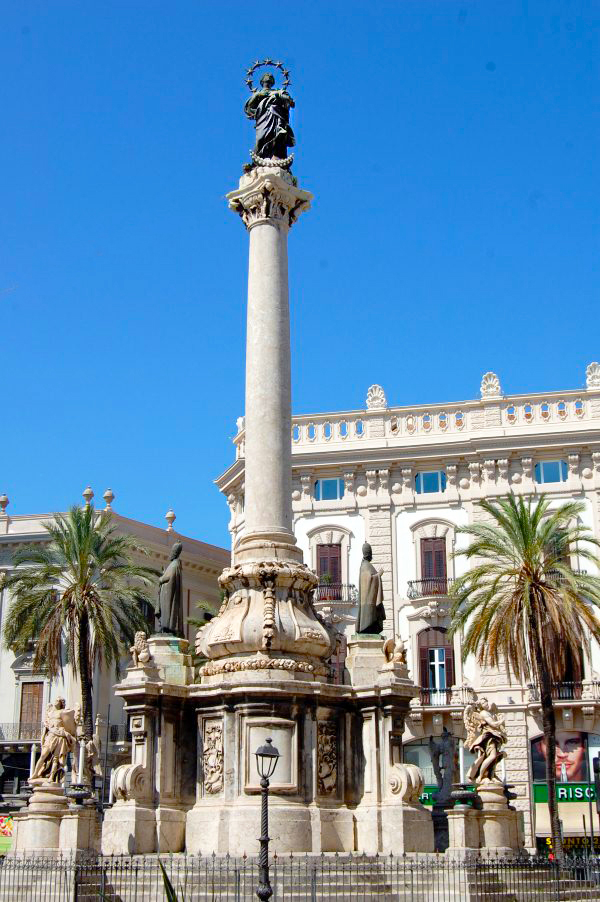
La Festa dell’Immacolata concludes with an evening concert at the Basilica of Santa Maria in Ara Coeli on the Capitoline Hill. Following a festive day of ceremonies, Rome is ready for the holiday season, glowing with Christmas decorations and ready for a month full of events to cascade through the Eternal City.
A similar event takes place in Palermo, Sicily, without the Pope in attendance. The breathtaking Baroque-style Chiesa dell’Immacolata Concezione, or Church of the Immaculate Conception, is the beginning point for the annual procession of the statue of the Blessed Virgin. On the Feast Day, the faithful attend the solemn procession which follows Corso Vittorio Emanuele and Via Roma and arrives at Piazza San Domenico, where the Column of the Immaculate Conception stands. Designed by Tommaso Napoli in 1724, just like in Rome, there is an annual offering of flowers to the Virgin, carried out by the Palermo Fire Brigade.
Parades and feasts to the Blessed Virgin Mary are also held around the country. In the Abruzzo region, the Immacolata is often celebrated with ceremonies centered around bonfires. According to tradition, fire symbolizes the purification of the Virgin Mary, who was freed from sin. The ceremony also represents fertility and love. In Francavilla in the province of Chieti, the town is lit up with lights in every neighborhood while the faithful surround a bonfire with prayers, traditional songs and dances dedicated to the Madonna in a centuries-old nighttime tradition.
Ancient Battle Relics Discovered
Meanwhile, in Atri and other towns, the Vigil of the Immacolata covers two days and includes roasted chestnuts, hot wine and other local specialties. A torch lit procession of the fauns, a mythical wood-nymph of the forest, leads into the main square to light the bonfire. The streets are filled with theater, folklore, music and dancing before Mass is offered and fireworks light up the sky.
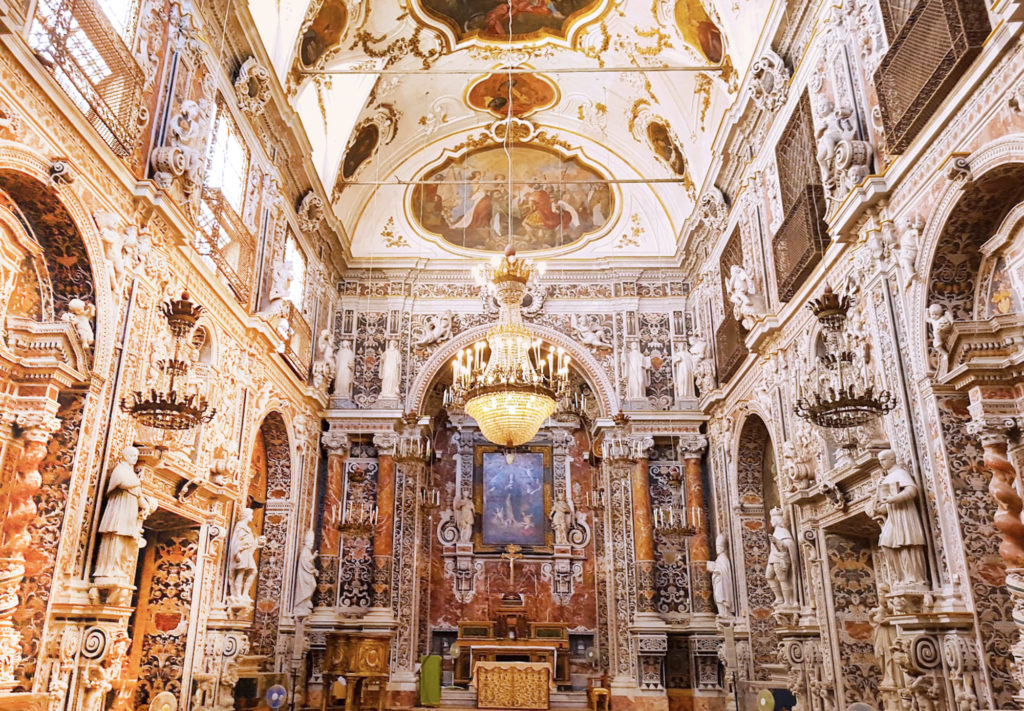
In Naples, people gather around the Guglia Column in Piazza del Gesù, which is the symbol of the devotion to the Virgin Mary. The Spire of the Immaculate Virgin was completed in 1747, under the direction of King Carlo III. He had said that the people of Naples should have the means of admiring the statue of the Immaculate Virgin without having to go into the Church of Gesù Nuovo, where the statue stood. The spire was designed by Giuseppe Genoino and the main sculptors were Matteo Bottiglieri and Francesco Pagano. The rich ornamentation of the spire epitomizes the Neapolitan Baroque sculpture. Similarly to Rome, a garland is placed on the Blessed Virgin Mary statue on La Festa dell’Immacolata by the Mayor of Naples.
December 8th also marks the date that the small Ligurian town of Manarola in the Cinque Terra switches on the 15,000 lights for the biggest presepio in the world, an incredible spectacle that will take your breath away!
